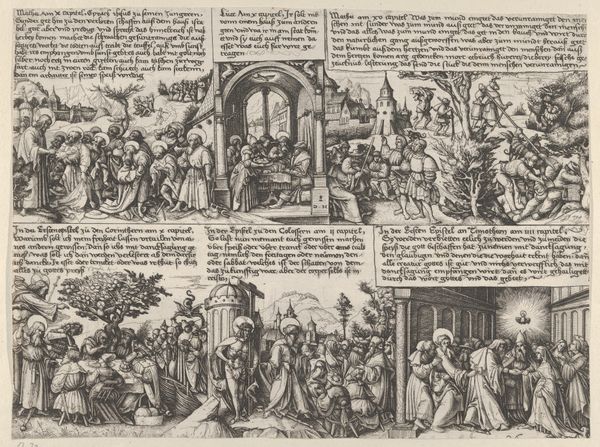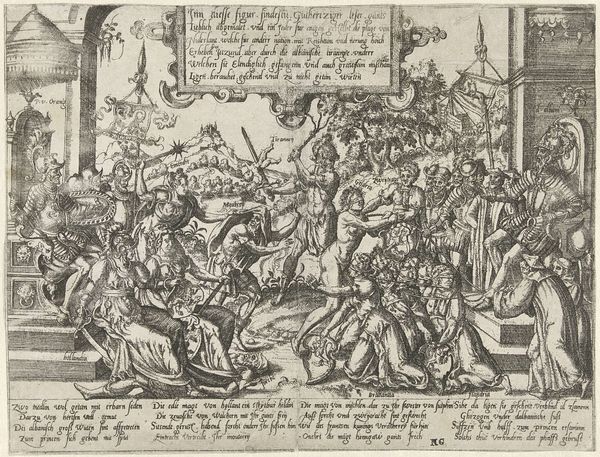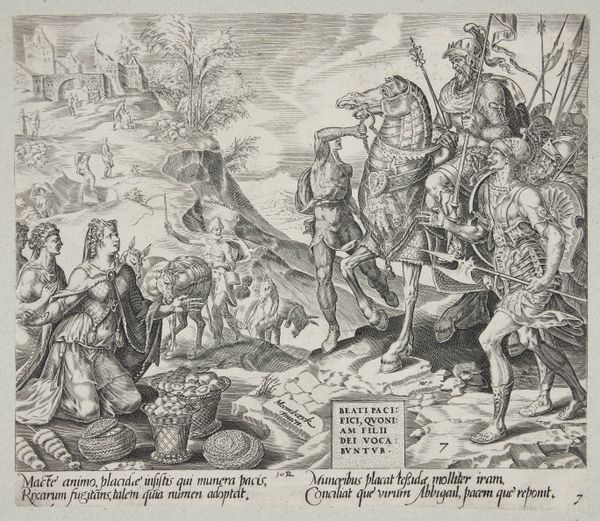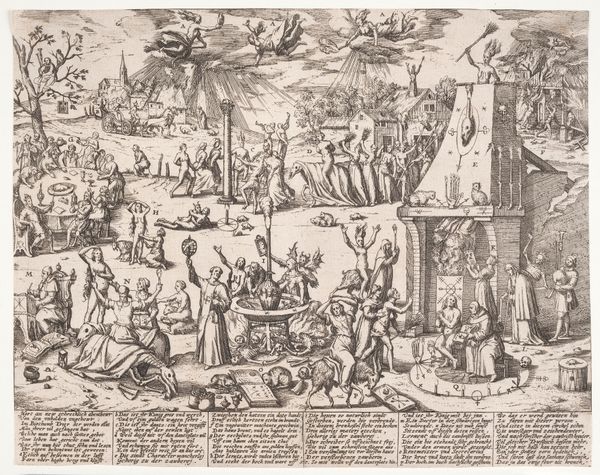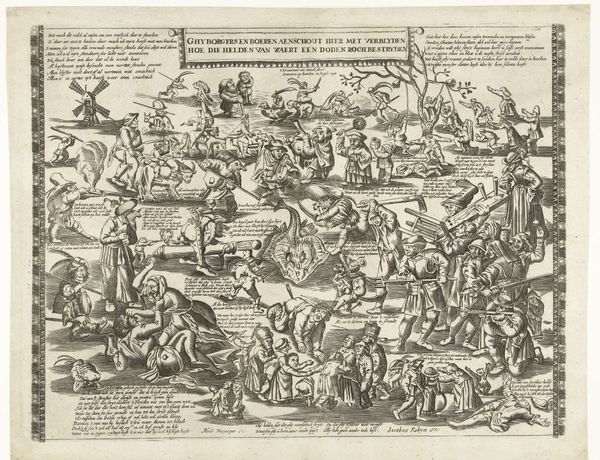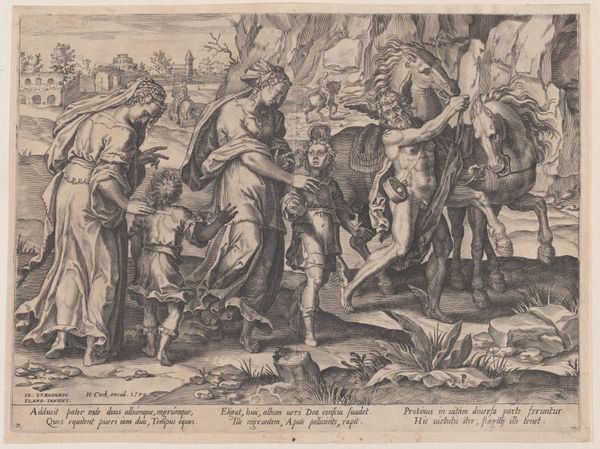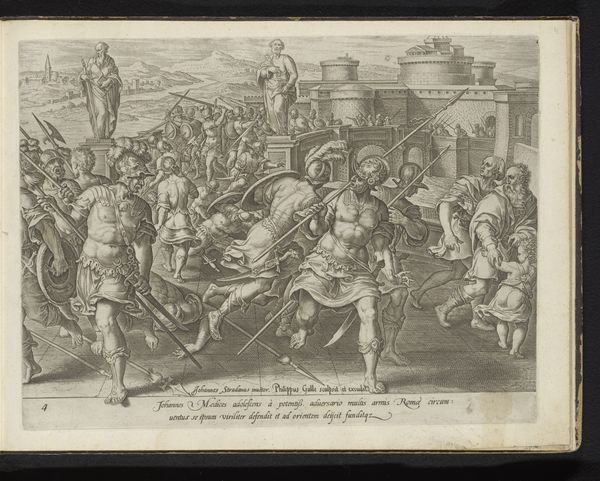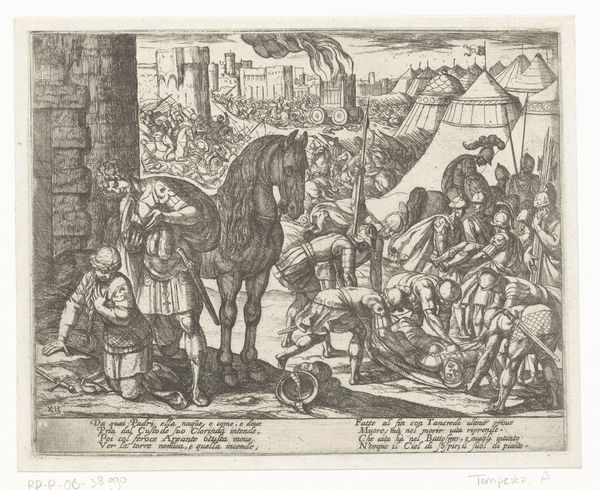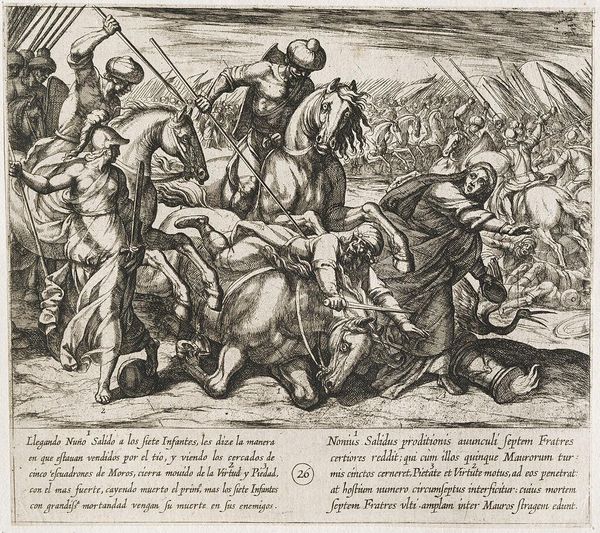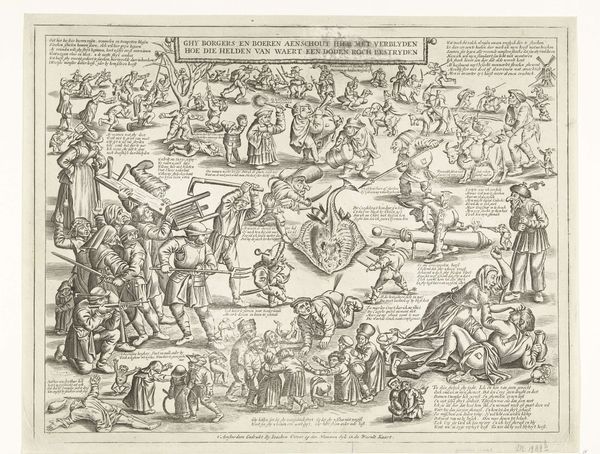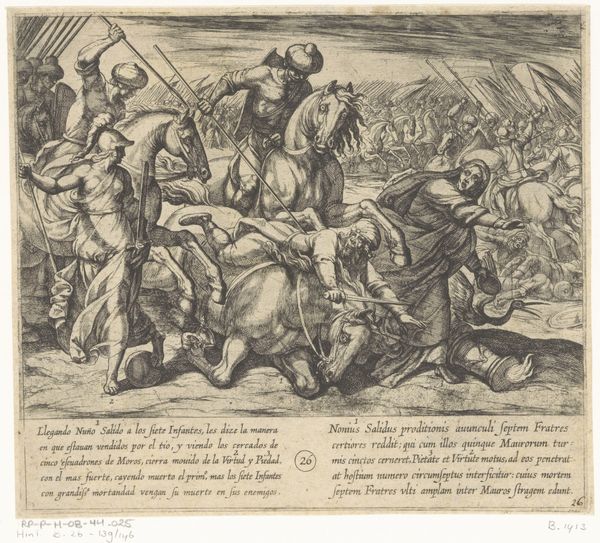
drawing, print, engraving
#
drawing
#
narrative-art
# print
#
figuration
#
line
#
history-painting
#
northern-renaissance
#
engraving
Dimensions: sheet: 8 1/8 x 10 1/4 in. (20.7 x 26 cm)
Copyright: Public Domain
Editor: This is "Scenes from Matthew 10:34-38," an engraving made between 1490 and 1536 by Daniel Hopfer. The dense line work really gives it a feeling of claustrophobia. All of the little figures packed together, and each scene telling its own little part of the story. What stands out to you when you look at it? Curator: The compelling aspect to me lies in examining the processes and the materiality that led to this kind of wide distribution of images. Hopfer's use of etching—specifically, his pioneering adaptation of armor-decorating techniques—democratized printmaking to an extent. Instead of relying on the skills of woodcutters or traditional engravers, this is almost a manufacturing innovation. Editor: So, you're less focused on the biblical scenes depicted and more on how he made it? Curator: Precisely. Think about the cultural implications. Cheaper, faster production leads to wider availability, but it also alters the artistic hierarchy. Is this high art, when the tools and techniques come from craft and industrial practices? The line work, as you said, creates that overwhelming feeling, which further relates to the societal impact during this historical moment of mass production. How does the dissemination of the print reflect the social tensions of the time? Editor: I guess I hadn't considered the print as almost a product of the period’s industrialization. I was caught up in the narrative aspects. Curator: The content matters, certainly, but always remember to consider what making it meant, what distributing it meant, and what access to that finished material could accomplish for individuals. Editor: That’s a good point. It reframes my whole understanding of Northern Renaissance prints. Thanks! Curator: My pleasure. There's always something to discover when we examine the materiality of art and its relation to broader historical currents.
Comments
No comments
Be the first to comment and join the conversation on the ultimate creative platform.
